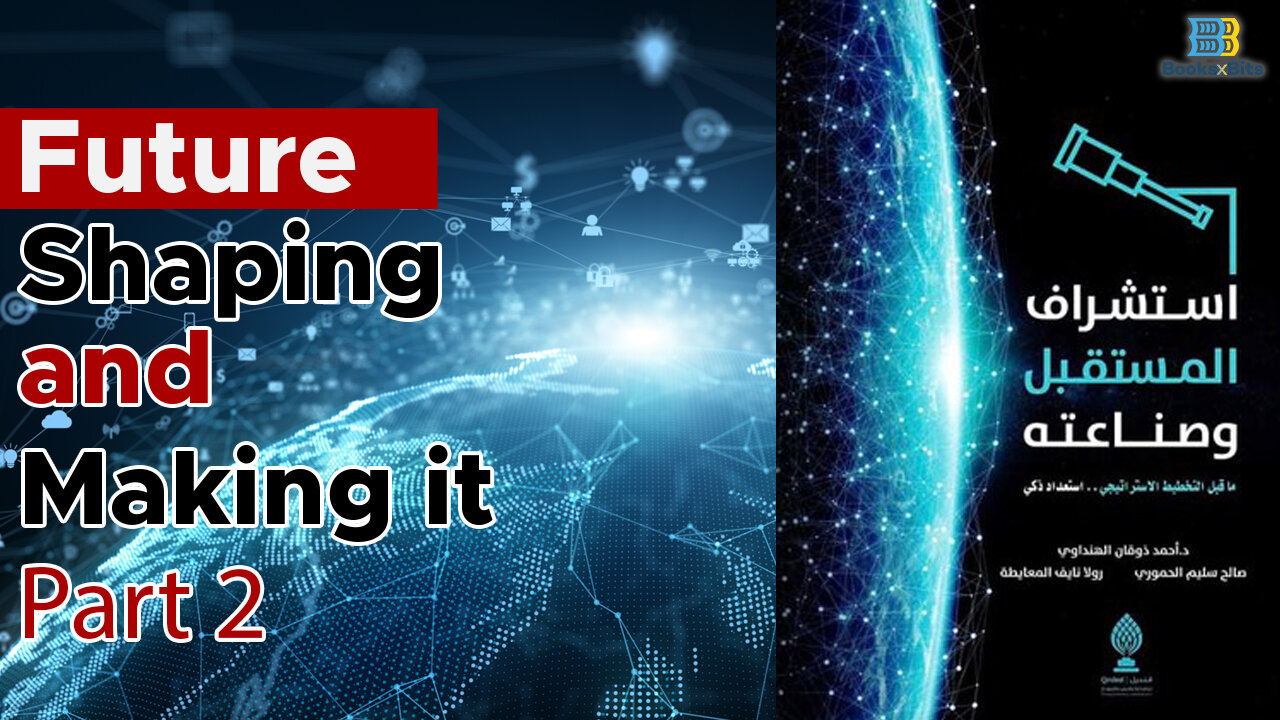Premium Only Content

Future Shaping and Making It by Ahmed Hindawy, Saleh Al Hamory, and Rola Maaytah - Part 2
Foresight expert and consultant Suleiman Al Kaabi defines “foresight” as a structured, participatory, multidisciplinary approach to explore the driving force of change and future alternatives that range between the medium and long term. Foresight includes drawing a proactive approach and adopting different scenarios that can be transformed into reality by taking decisions at the present time. It is worth noting that future foresight does not aim to fix or reduce the mistakes of the past, but rather focuses intensely on building the future which we aspire. Foresight is distinguished from other studies of the future by four basic characteristics, first: Foresight is action-oriented, as analytical studies that cannot be transformed into actions or cannot be linked to actions cannot be considered as a part of the foresight, as foresight focuses on acts and actions that can be applied and which in turn will shape the future more effectively. Secondly, it is open towards the alternative future, as this science is based on the fact that the future is not inevitable, and therefore the future can develop in different directions, and it is our current decisions that will have the largest role in reaching the desired future. Third: Foresight is described as participatory, as it must be done by a large group of experts and academics, which allows obtaining a better feedback, and finally: foresight is multidisciplinary, as the different challenges and problems that we usually face need experts in different fields so that it can be understood and therefore, we can reach the ideal solution.
#Books #Booksxbits #BookSummary
Please follow our social media accounts:
YouTube: https://www.youtube.com/c/Booksxbits
Instagram: https://www.instagram.com/booksxbits
Twitter: https://twitter.com/booksxbits
FaceBook: https://www.facebook.com/booksxbits
-
 2:55:11
2:55:11
Barry Cunningham
5 hours agoPRESIDENT TRUMP MADE TODAY A VERY BAD DAY TO BE A DEMOCRAT!
66.5K45 -
 1:15:29
1:15:29
Flyover Conservatives
23 hours agoFrom Cool to Cringe: How Democrats Lost America’s Ear | FOC Show
23.5K4 -
 8:19
8:19
MattMorseTV
9 hours ago $0.26 earnedTrump is ACTUALLY DOING IT.
21.5K32 -

ZWOGs
11 hours ago🔴LIVE IN 1440p! - Tarkov w/ Casey & crgoodw1n, Kingdom Come Deliverance, & More - Come Hang Out!
18K5 -
 LIVE
LIVE
We Like Shooting
15 hours ago $0.03 earnedWe Like Shooting 625 (Gun Podcast)
241 watching -
 1:45:02
1:45:02
Glenn Greenwald
6 hours agoIsrael Slaughters More Journalists, Hiding War Crimes; Trump's Unconstitutional Flag Burning Ban; Glenn Takes Your Questions | SYSTEM UPDATE #504
113K126 -
 1:29:31
1:29:31
Killerperk
3 hours ago $0.36 earnedRoad to BF6. Come hang out #regiment #bf6
19.8K2 -
 LIVE
LIVE
Jokeuhl Gaming and Chat
4 hours agoDARKTIDE - Warhammer 40k w/ Nubes Bloobs and AoA
43 watching -
 LIVE
LIVE
Cripiechuccles
5 hours ago😁💚💙MOTA MONDAY WITH CRIPIE💚💙 👌SMOKING, GAMING & WATCHING FLICKS!:😁
39 watching -
 36:11
36:11
Stephen Gardner
4 hours ago🔥'Burn ALL TRUMP FLAGS’ says Tim Walz + Democrat CAUGHT rigging own election!
20.1K12